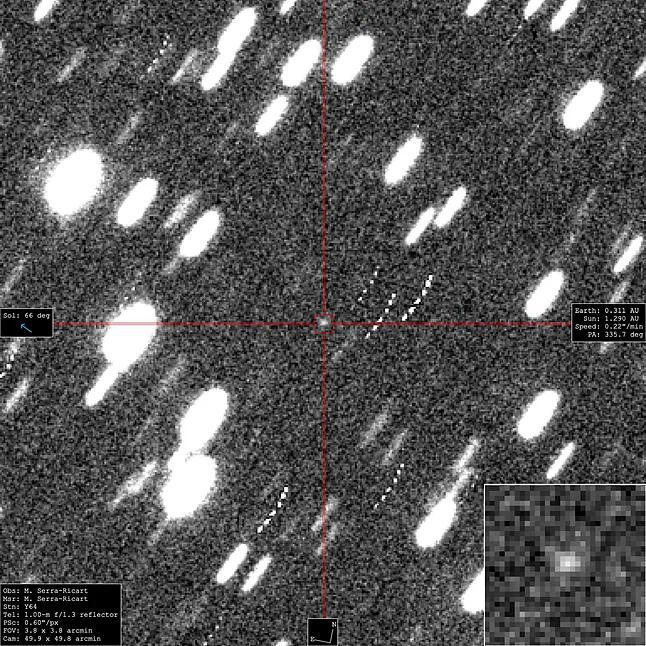The asteroid 2024 YR4, discovered last December from a Chilean telescope, is now the asteroid with the highest probability of impact against Earth since the orbits of dangerous objects have been monitored, following the new update from NASA and the European Space Agency (ESA), the second update made by both this same week.
Thus, NASA has raised the risk of impact against Earth on December 22, 2032 to 3.1%, from the 2.6% established on Monday. Meanwhile, ESA's calculations now estimate a 2.8% probability of collision (on Tuesday it was set at 2.4%).
It is estimated that the asteroid currently under scrutiny by the astronomical community measures between 40 and 90 meters in diameter, and in the event of a collision with a populated area of Earth, it would have the capacity to destroy a city, according to experts.
The collision probability of 2024 YR4 has already exceeded that of Apophis, an asteroid about 350 meters discovered in 2004 that had been the greatest threat to Earth due to its impact risk. Although its probability did not reach 3% (it was estimated at 2.6%), its size was much larger than the new asteroid, and therefore, its destructive capacity was much greater.
Fortunately, subsequent studies of Apophis' orbit completely ruled out any risk of impact during its approach to Earth in 2029 and in the following decades.
Regarding 2024 YR4, although the impact probability continues to increase, the classification of risk on the Torino Scale remains unchanged, remaining at level 3. This scale classifies Near Earth Objects (NEOs), such as asteroids and comets, according to their impact hazard. It ranks those with no probability of collision at level 0, while levels 8, 9, and 10 are reserved for those with a certain impact (with different consequences).
Level 3 includes asteroids that will have a "close encounter" with Earth and "deserve attention from astronomers, authorities, and the public," as they are capable of causing local destruction, although "most likely, new and more precise observations will redirect the danger to level 0."
So far, no asteroid has exceeded level 4. Only Apophis, a rock over 350 meters discovered in 2004, had surpassed level 1 on the Torino Scale, reaching level 4 due to the risk of collision with our planet during its approach in 2029. However, as its orbit was better studied, scientists ruled out any risk of impact.
The same outcome is hoped for with 2024 YR4, the asteroid discovered from the ATLAS telescope in Río Hurtado, Chile. However, the impact probability has been increasing since the end of January when the United Nations activated Planetary Defense protocols established about a decade ago.
The astronomical community continues to observe it before it becomes invisible to ground-based telescopes by mid-April to better determine its orbit and assess the true risk of impact against our planet during the expected approach on December 22, 2032.
In addition to studying it with the best ground-based telescopes until it moves away from our planet and becomes visible again in 2028, it is planned to observe it with the James Webb Space Telescope in early March. These observations are expected to provide a better determination of its size. According to studies by the Institute of Astrophysics of the Canary Islands, measurements indicate that the rock is closer to 50 meters than 90 meters.
